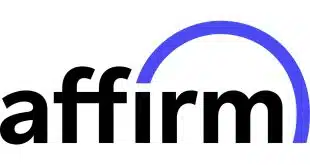While backers of cardless ATM transactions expected consumers to home in on using their smart phones as remote controls for making cash withdrawals, what wasn’t known was how much they understood about the risks from skimming and threats to their financial privacy. As it turns out, that understanding is pretty high.
That’s the take from Doug Brown, senior vice president and general manager of mobile at Jacksonville, Fla.-based Fidelity National Information Services Inc. (FIS). FIS, in conjunction with Paydiant, a unit of PayPal Holdings Inc., launched a card-free ATM service in January 2015 that is used by banks such as BMO Harris Bank Inc., Wintrust Financial Corp., and Peoples Bank. FIS calls its service Cardless Cash, and only debit card accounts can be used at this time.
Expectations were that consumers would take to using their bank’s smart-phone apps as a remote control for ATM transactions, Brown tells Digital Transactions News. “What we didn’t expect is that people understand very well the risks of skimming and privacy,” Brown says. That comes from consumer feedback, he says. They liked that they don’t have to insert a debit card into an ATM and risk it being skimmed or their PINs being surreptitiously captured.
Consumers can save time using card-free ATM cash withdrawal versus a traditional card-based one—typically the former is about 10 seconds and the latter 30 to 40 seconds, Brown says—but they also reduce their risk of becoming fraud victims. Because the transaction is secured via a cloud-based service, no card data is entered into the ATM machine, virtually eliminating the possibility of a skimming device copying the magnetic-stripe data, Brown says.
Here’s how FIS’s Cardless Cash works. The consumer is automatically registered to use it following a successful authentication with the bank’s app. Once that’s done, consumers can tap the Cardless Cash button in the app to set up a transaction. The service requires a software update to ATMs, which mostly can be made remotely, Brown says.
Once the consumer arrives at a participating ATM, she presses the Cardless Cash button on the ATM display. A Quick Response barcode appears. From within the banking app, she accesses the smart-phone’s camera. The app makes a backend check on the account. If authorized, instructions are sent to the machine to dispense the cash. “In all of that presentment, the phone is not talking directly to the ATM,” Brown says. There is communication, but it’s over a secure cloud service using tokenized data, he says.
Paydiant, which has developed mobile payment services for the likes of Subway and Merchant Customer Exchange LLC, provides the tokenization capability, says Chris Morse, a PayPal spokesman. The QR code contains only transaction and terminal identifiers, with no amount, account, or customer information, he says.
FIS’s card-free ATM service is available at more than 2,000 ATMs, but will be available at more later this year. FIS says it is enabling the more than 80,000 ATMs it operates, and will make the service available to ATMs on its NYCE debit network. Brown says bank and non-bank ATM operators will be eligible to offer the service.




